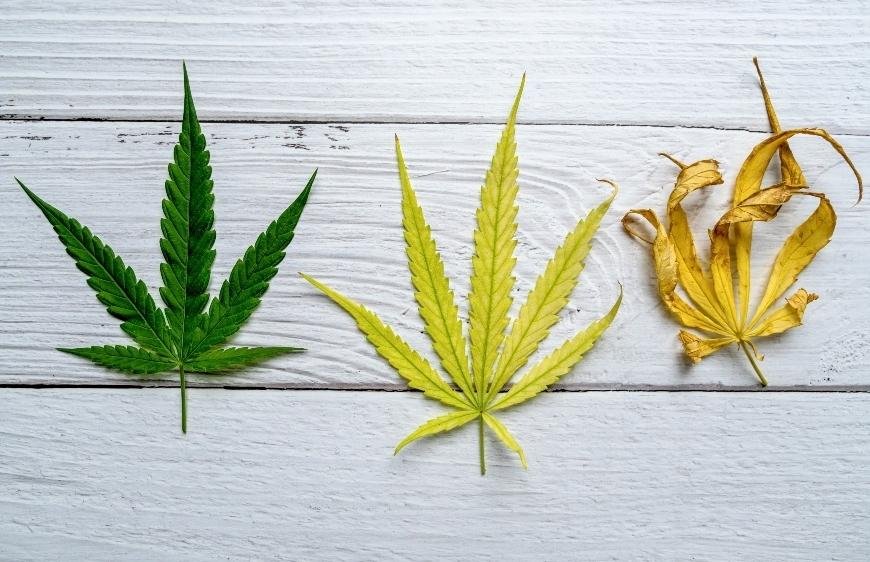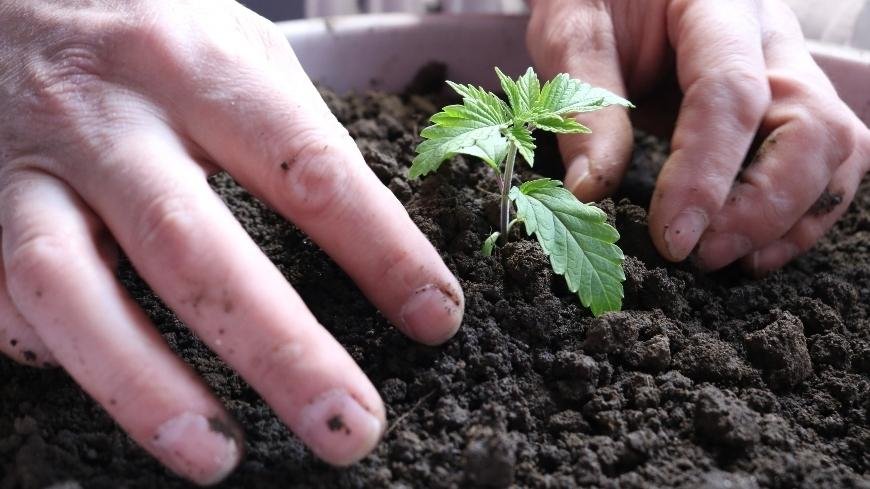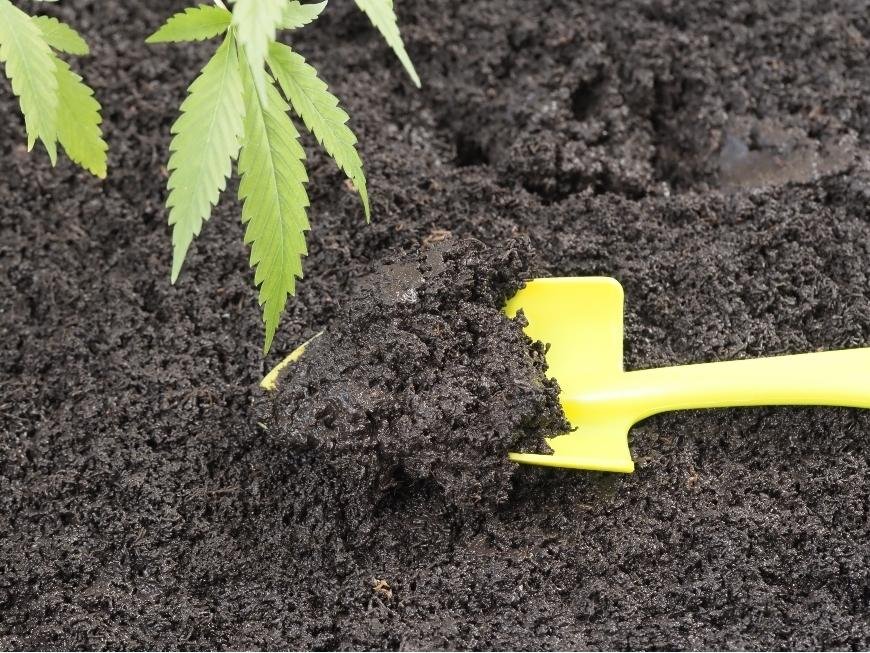How to Influence Cannabis Nutrient Availability
Discover how to influence cannabis nutrient availability for optimal plant growth, ensuring your plants thrive with proper pH levels and soil quality.

When it comes to growing cannabis, understanding how to influence cannabis nutrient availability is crucial for achieving optimal growth and yield. In this blog post, we will explore the various elements influencing nutrient uptake in cannabis plants and provide you with useful information to help maximize their potential.
We will discuss measuring nutrient availability, avoiding deficiencies, adjusting pH levels for optimal growth, maximizing temperature for maximum uptake, improving soil quality for better absorption of nutrients and monitoring these levels regularly. By mastering these techniques in your cannabis cultivation journey, you can ensure a healthy grow room environment and produce high-quality buds consistently.
Table of Contents:
- Understanding Nutrient Availability in Cannabis Plants
- pH Levels
- Temperature
- Soil Quality
- Measuring Nutrient Availability
- Avoiding Nutrient Deficiencies
- Adjusting pH Levels for Optimal Growth
- Maximizing Temperature for Maximum Uptake
- Improving Soil Quality for Maximum Uptake
- Monitoring Nutrient Levels Regularly
- Frequently Asked Questions How to Influence Cannabis Nutrient Availability
- Conclusion
Understanding Nutrient Availability in Cannabis Plants
Nutrient availability is a crucial factor for successful cannabis cultivation. It refers to the amount of nutrients that your cannabis plants can take up and use from the soil or growing medium. Several factors affect nutrient availability, including pH levels, temperature, and soil quality. To gain an in-depth understanding of how these factors affect your cannabis plants' growth, we will be exploring each one in detail.
pH Levels
The pH level of your growing medium plays a significant role in determining nutrient availability for your cannabis plants. The pH scale extends from 0 to 14, with a neutral point of 7; lower than that is acidic and higher is alkaline. Most cannabis plants prefer a pH level between 6 and 7 for soil-grown varieties, or 5.5 to 6.5 when grown hydroponically, as this is the range in which nutrients are most readily available.
If the pH level falls outside this optimal range, certain nutrients may become unavailable due to nutrient lockout, leading to deficiencies or toxicities affecting plant health and yield potential.
Temperature
Temperature control in your grow room also influences nutrient uptake by affecting root zone temperatures as well as overall plant metabolism rates. Ideal temperatures fluctuate depending on the strain, but typically remain in the 70°F (21°C) area during veg growth and slightly cooler for flowering.
Excessively high or low temperatures can lead to reduced nutrient uptake, resulting in slowed growth and potential nutrient deficiencies. It is essential to maintain a consistent temperature within the optimal range for your cannabis plants.
Soil Quality
The quality of your soil or growing medium directly impacts nutrient availability for your cannabis plants. A well-aerated, loose soil with good drainage allows roots to access nutrients more easily than compacted soils with poor structure. Additionally, organic matter and natural fertilisers help improve soil quality, promoting healthy root development and increased nutrient uptake.
- Organic Matter: Adding compost or other forms of organic matter helps increase water retention capacity while providing additional nutrients for plant growth.
- Natural Fertilisers: Using natural fertilisers such as worm castings, bat guano, or fish emulsion provides essential nutrients that promote strong root systems and overall plant health.
In summary, understanding how pH levels, temperature control and soil quality affect nutrient availability will significantly impact the success of your cannabis cultivation efforts. By optimizing these factors in conjunction with regular monitoring of nutrient concentrations in the growing medium you can ensure that your cannabis plants receive all the necessary elements they need to thrive throughout their life cycle.

Measuring Nutrient Availability
In this section, we will discuss various methods of soil testing and how to adjust nutrient levels accordingly.
Soil Testing Methods
To accurately measure the nutrient concentrations in your growing medium, you can use one of the following soil testing methods:
- pH Test Strips or Meters: These tools help determine the pH level of your growing medium, which affects nutrient availability. A perfect pH range for cannabis grown hydroponically is between 5.5-6.1 while a slightly higher range (6-7) is suitable for plants grown in soil.
- Nutrient Solution Test Kits: These kits measure specific nutrients like nitrogen, phosphorus, potassium and other essential elements present in your growing medium or water supply.
- Laboratory Soil Analysis: For a more comprehensive analysis of your soil's nutritional profile, consider sending samples to a professional laboratory that specializes in plant nutrition analysis.
Maintaining Optimal Nutrient Levels
If you find that certain nutrients are lacking or overly abundant after conducting tests on your growing medium, there are several ways to adjust these levels for better cannabis cultivation results:
- Add Natural Fertilisers: Increase deficient nutrients by adding natural fertilisers such as compost tea or worm castings into the mix.
- Dilute Excessive Nutrients: If some nutrients are too concentrated, dilute the nutrient solution with water to achieve a more balanced composition.
- Flush Growing Medium: In cases of severe nutrient lockout or salt buildup, flush your growing medium thoroughly with clean water to remove excess nutrients and reset pH levels.
Regularly monitoring and adjusting nutrient concentrations in your cannabis plants' environment is essential for their overall health. It is critical to understand the individual nutritional demands of the strain you are cultivating, as different strains may necessitate diverse nourishment. By understanding how various factors affect plant nutrition, you can create an optimal grow room environment that promotes healthy growth and maximum yields.
Avoiding Nutrient Deficiencies
Understanding nutrient uptake and availability is crucial for avoiding nutrient deficiencies in cannabis plants. A well-balanced diet of nutrients ensures optimal growth, potency, and overall health of your plants. To prevent these deficiencies from occurring, consider the following tips:
- Know your growing medium: Different growing mediums have varying levels of nutrients available to the plant. For example, cannabis grown hydroponically relies on a carefully balanced nutrient solution that you provide directly to the roots. On the other hand, soil-based grows often contain natural fertilisers which release nutrients over time.
- Maintain proper pH levels: The pH level plays a significant role in determining how effectively your cannabis plants can absorb essential nutrients from their environment. Most nutrients are best absorbed within a specific range on the pH scale; if this balance is off, it can lead to nutrient lockout, where certain elements become unavailable or toxic to your plants.
- Monitor nutrient concentrations: Overfeeding or underfeeding your cannabis plants can result in various problems such as stunted growth or leaf discoloration due to nutrient deficiencies or toxicities. Regularly test and adjust both macro- (nitrogen, phosphorus & potassium) and micronutrients (calcium, magnesium & iron) concentrations based on plant needs throughout different stages of development.
- Beware of salt buildup: Excessive use of synthetic fertilisers may cause salt buildup around root systems leading to poor water absorption by roots resulting in reduced access to essential minerals required for healthy growth causing potential damage like root burn and wilting leaves. To avoid this issue flush with clean water or use organic nutrients which have a lower risk of salt buildup.
By implementing these strategies, you can prevent nutrient deficiencies and toxicities in your cannabis plants. Checking and adjusting the atmosphere of your cultivation space regularly will guarantee that your plants obtain the right plant nutrition they require for maximum growth and progress.
Adjusting pH Levels for Optimal Growth
In the world of cannabis cultivation, one crucial factor that significantly affects nutrient availability is the pH level. The pH scale ranges from 0 to 14, with 7 being neutral. Values below 7 are acidic, while those above are alkaline. The ideal pH range for cannabis plants to thrive when grown in soil is 6-7, while hydroponically grown plants prefer 5.5-6.5.
Why does this matter? Well, different nutrients become available to your cannabis plants at specific pH levels within these ranges. If your growing medium's pH falls outside of the optimal range, it can lead to nutrient lockout, where essential nutrients become unavailable for uptake by plant roots.
Maintaining Perfect pH Levels
- Test Your Growing Medium: Use a reliable soil or water testing kit to measure your growing medium's current pH level regularly.
- Adjust Accordingly: Based on test results, use appropriate natural fertilisers or commercial products like phosphoric acid (for lowering acidity) or potassium hydroxide (for raising alkalinity) to adjust the pH levels as needed.
- Rinse Thoroughly:If you're using a hydroponic system and experience salt buildup due to high nutrient concentrations, flush out the entire system before adjusting its overall nutrient solution balance.
Preventing Nutrient Lockout
To prevent nutrient lockout, it's essential to monitor and maintain optimal pH levels in your grow room. Here are some tips:
- Use High-Quality Water: Tap water can contain varying pH levels and impurities that may affect your growing medium. Use filtered or reverse osmosis (RO) water for better control over the pH balance.
- Avoid Over-Fertilizing: Excessive use of fertilisers can lead to a buildup of salts in the soil or hydroponic system, causing fluctuations in pH levels. Stick to recommended dosages on product labels or follow organic practices using natural fertilisers like compost tea.
- Maintain Consistent Temperature & Humidity: Fluctuations in temperature and humidity can also impact the overall health of your cannabis plants, including their ability to absorb nutrients efficiently. Keep these factors stable within ideal ranges by monitoring them with a digital hygrometer/thermometer combo device.
The proper pH level is essential for optimal growth and should be monitored carefully. Temperature also has a bearing on the successful uptake of nutrients, so maintaining an appropriate temperature range is key.
Maximizing Temperature for Maximum Uptake
Temperature is a significant factor in enabling cannabis plants to take up nutrients. In order to maximize nutrient availability and absorption, it is essential to maintain optimal temperature levels within your grow room. The ideal temperature range for cannabis cultivation varies depending on the stage of growth:
- Vegging phase: 70-85°F (21-29°C)
- Flowering phase: 65-80°F (18-26°C)
Beyond these ranges, nutrient uptake can be negatively affected, leading to potential deficiencies or toxicities.
Maintaining Consistent Temperatures
To ensure consistent temperatures in your growing environment, consider investing in a quality thermostat and heating/cooling system. This will allow you to regulate the ambient temperature more effectively and prevent fluctuations that could harm your cannabis plants' ability to absorb nutrients from their growing medium.
Avoiding Excessive Heat Stress
In addition to maintaining optimal temperatures for nutrient uptake, it's also important to avoid exposing your cannabis plants to excessive heat stress. High temperatures can cause rapid evaporation of water from plant cells, resulting in reduced nutrient absorption capacity due to an imbalance between water and salt concentrations within the plant tissue.
Tips for Reducing Heat Stress:
- Proper ventilation: Ensure adequate airflow throughout your grow room with fans or air conditioning units.
- Cooler light sources: Opt for LED lights instead of high-intensity discharge (HID) lamps, as they produce less heat and are more energy-efficient.
- Shade cloth: If growing outdoors, use a shade cloth to protect your cannabis plants from direct sunlight during the hottest parts of the day.
By maintaining optimal temperature levels in your grow room and avoiding excessive heat stress, you can significantly improve nutrient availability for your cannabis plants. This will result in healthier growth, increased yields, and better overall plant health throughout the entire cultivation process.

Improving Soil Quality for Maximum Uptake
To ensure maximum uptake of nutrients by cannabis plants, it is crucial to focus on improving soil quality. A well-balanced and nutrient-rich growing medium can significantly impact the overall health and yield of your cannabis plants. Here are some strategies to enhance soil quality:
- Choose the right growing medium: Opt for a high-quality growing medium that meets the specific needs of your cannabis plants. Some popular options include coco coir, peat moss, perlite, vermiculite, and composted super soils. Each has its own advantages and disadvantages; research which one best suits your particular grow room conditions.
- Add natural fertilisers: Incorporate organic matter into your soil in the form of natural fertilisers, such as worm castings or bat guano. These amendments improve soil structure while providing essential nutrients to support healthy plant growth.
- Maintain proper pH levels: As mentioned earlier in this article, maintaining optimal pH levels is vital for nutrient availability in cannabis cultivation. Regularly test and adjust the pH level within an ideal range (6-7) using appropriate methods like adding lime or sulfur depending on whether you need to raise or lower pH values.
- Aerate the soil: Compacted soils restrict root growth and limit access to water and nutrients needed by cannabis plants. To promote better drainage and oxygenation around roots systems, regularly aerate compacted areas with tools like garden forks or specialized equipment designed specifically for this purpose.
- Avoid salt buildup: Excessive use of synthetic fertilisers can lead to salt buildup in the soil, which causes nutrient lockout and hinders plant growth. To prevent this issue, flush your growing medium with water periodically or opt for organic nutrients that are less likely to cause salt accumulation.
- Rotate crops: Rotating different types of plants within your grow space helps maintain a healthy balance of nutrients in the soil. This practice reduces the risk of depleting specific elements while also minimizing potential issues related to pests and diseases.
Incorporating these strategies into your cannabis cultivation routine will significantly improve soil quality, ensuring maximum uptake of essential nutrients by your plants. Remember that monitoring nutrient concentrations and adjusting them as needed is an ongoing process throughout the entire lifecycle of cannabis grown hydroponically or in traditional soils.
Monitoring Nutrient Levels Regularly
To ensure optimal growth of your cannabis plants, it is essential to monitor nutrient levels regularly. This will help you identify any potential nutrient deficiencies or toxicities before they become a significant issue and affect the overall health and yield of your plants. Here are some tips on how to effectively monitor nutrient levels in your grow room:
- Test the pH level: The pH scale measures the acidity or alkalinity of a solution, with 7 being neutral. For optimal growth, cannabis should be grown in a slightly acidic environment ranging from 6.0 to 6.5 for soil-based cultivation and 5.8 when hydroponic methods are employed. Regularly testing the pH level of your growing medium or nutrient solution can help prevent issues such as nutrient lockout, which occurs when nutrients become unavailable due to an improper pH balance.
- Check EC (Electrical Conductivity) values: Measuring the electrical conductivity (EC) value of your nutrient solution provides insight into its salt concentration - higher EC values indicate higher salt concentrations, while lower values suggest diluted solutions that may not provide sufficient plant nutrition. Monitoring these values helps maintain appropriate nutrient concentrations for healthy cannabis cultivation.
- Analyze runoff water: When watering your cannabis plants, collect some runoff water from beneath them to test its pH and EC levels - this can give you valuable information about what's happening inside the root zone regarding both acidity/alkalinity balance and overall mineral content.
- Maintain proper temperature: Temperature plays a crucial role in determining how efficiently nutrients are absorbed by roots; hence maintaining optimal temperatures within the grow room is vital for maximizing nutrient uptake. Cannabis plants generally prefer temperatures between 70-85°F (20-30°C) during the day and slightly cooler at night.
- Observe plant growth: Regularly inspect your cannabis plants for signs of nutrient deficiencies or toxicities, such as yellowing leaves, stunted growth, or burnt leaf tips. Early detection can help you take corrective measures before any lasting damage occurs.
In addition to these monitoring techniques, it's essential to use high-quality natural fertilisers and maintain a clean growing environment to prevent salt buildup in your growing medium. By keeping a close eye on pH levels, temperature conditions, and other factors affecting nutrient availability in your cannabis cultivation setup, you'll be well-equipped to address any potential issues promptly - ensuring healthy plants with bountiful yields.
Frequently Asked Questions How to Influence Cannabis Nutrient Availability
What are the factors that affect nutrient availability?
Nutrient availability in cannabis plants is influenced by several factors, including soil pH, temperature, moisture levels, and soil quality. Properly managing these conditions can help ensure optimal growth and nutrient uptake for your plants.
What are the six factors that influence the availability of nutrients in the soil?
The six main factors affecting nutrient availability in soil include: 1) Soil pH; 2) Cation exchange capacity (CEC); 3) Organic matter content; 4) Soil texture; 5) Microbial activity; and 6) Moisture content. Understanding each factor's role will help you create an ideal environment for cannabis plant growth.
What pH is cannabis nutrient availability?
Cannabis plants thrive at a slightly acidic pH level between 6.0 to 7.0 when grown in soil or around a pH of 5.8 when grown hydroponically or using coco coir as a medium.
Do sativas need more nitrogen?
Sativas typically require slightly higher amounts of nitrogen during their vegetative stage compared to indica strains due to their longer growth period and larger size potential.
Conclusion
By understanding nutrient availability in cannabis plants, measuring it regularly, and adjusting pH levels and soil quality accordingly, growers can avoid nutrient deficiencies and maximize uptake for optimal growth. It's essential to frequently monitor nutrient levels in order to guarantee that the plants are being provided with the necessary amount of nutrients.
In addition to temperature control and natural fertilizers, using a hydroponic growing medium can also improve nutrient availability. By following these tips, growers can influence cannabis nutrient availability for healthy plant growth.




























































































































